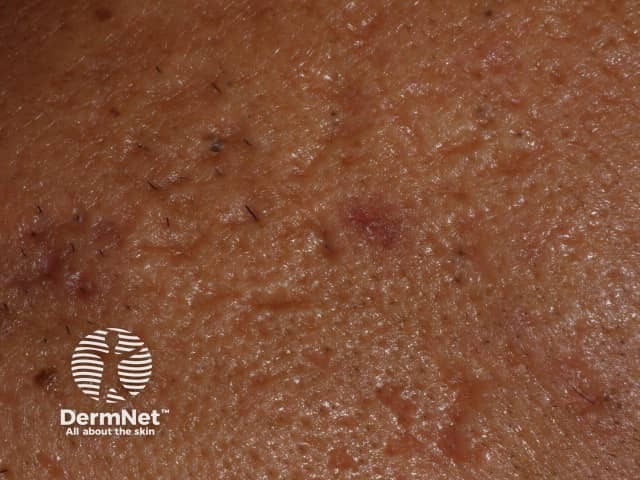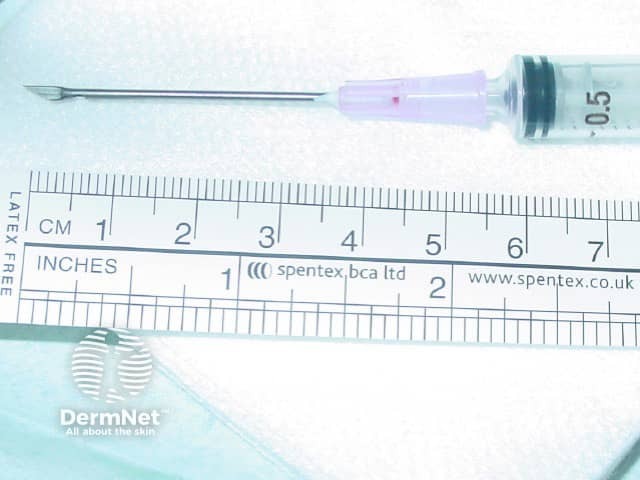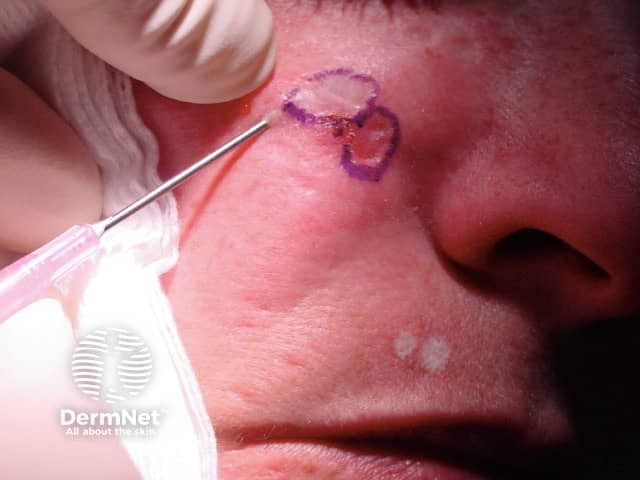Main menu
Common skin conditions

NEWS
Join DermNet PRO
Read more
Quick links
Author: Dr Ian Logan, Dermatology Specialist Registrar, Hammersmith Hospital, London, United Kingdom; Chief Editor: Dr Amanda Oakley, Dermatologist, Hamilton, New Zealand, November 2015.
Introduction Indications Contraindications Assessment Subcision Post-procedure Treatment Complication Treatment Outcome
Subcision is a minor surgical procedure used for treating depressed cutaneous scars and wrinkles. It is also called subcutaneous incisional surgery.
Subcision is performed using a special hypodermic needle inserted through a puncture in the skin surface. The sharp edge of the needle is used to break fibrotic strands that are tethering the scar to the underlying tissue.
The release of the fibrotic strands and new collagen deposition caused by wound healing leads to cosmetic improvement of the scar. Subcision can be safely performed in the outpatient setting and is usually well tolerated.
The decision to perform subcision will depend on the type, location, and severity of scarring; patient preference and expectations; and clinician experience and expectations.
Subcision may be used for the treatment of:
*excluding deep ice-pick scars

Rolling scars
Subcision may not be suitable in the following circumstances:
Acne scar severity can be graded using Goodman and Baron’s qualitative acne scar grading system to allow objective pre and post-treatment comparisons.
Macular scars can be erythematous, hyperpigmented (brown) or hypopigmented (pale) flat marks. They do not represent a problem of contour like other scar grades but of color.
Mild atrophic (thin) or hypertrophic (thick) scars may not be obvious at social distances of 50 cm or greater and may be covered adequately by makeup or the normal shadow of shaved beard hair in men or normal body hair if extrafacial.
Moderate atrophic or hypertrophic scarring is obvious at social distances of 50 cm or greater and is not covered easily by makeup or the normal shadow of shaved beard hair in men or body hair if extrafacial, but is still able to be flattened by manual stretching of the skin (if atrophic).
Severe atrophic or hypertrophic scarring is evident at social distances greater than 50 cm and is not covered easily by makeup or the normal shadow of shaved beard hair in men or body hair if extrafacial and is not able to be flattened by manual stretching of the skin.
The procedure of subcision is described below.
*A common pitfall is to fan too deeply in a plane below the dermis

Nokor needle

Subcision procedure

Subcision procedure

Subcision procedure
Immediately after subcision:
The number and intensity of subcisions should be limited on the first treatment to review the patient’s response, particularly when treating areas with a predilection for a hypertrophic reaction after subcision.
Individuals vary in their ability to form collagen (scar tissue). The number of subcisions required to correct a depression will depend on the type, location, severity of depression, and intensity of treatment.
Three to six visits suffice for the majority of cases of moderate scarring. Intervals of at least one month in-between treatments are generally recommended.
The risks and complications of subcision include:
Subcision as an acne scar treatment can be effectively combined with:
In appropriate cases, the results can be excellent. Treatment may need to be repeated.